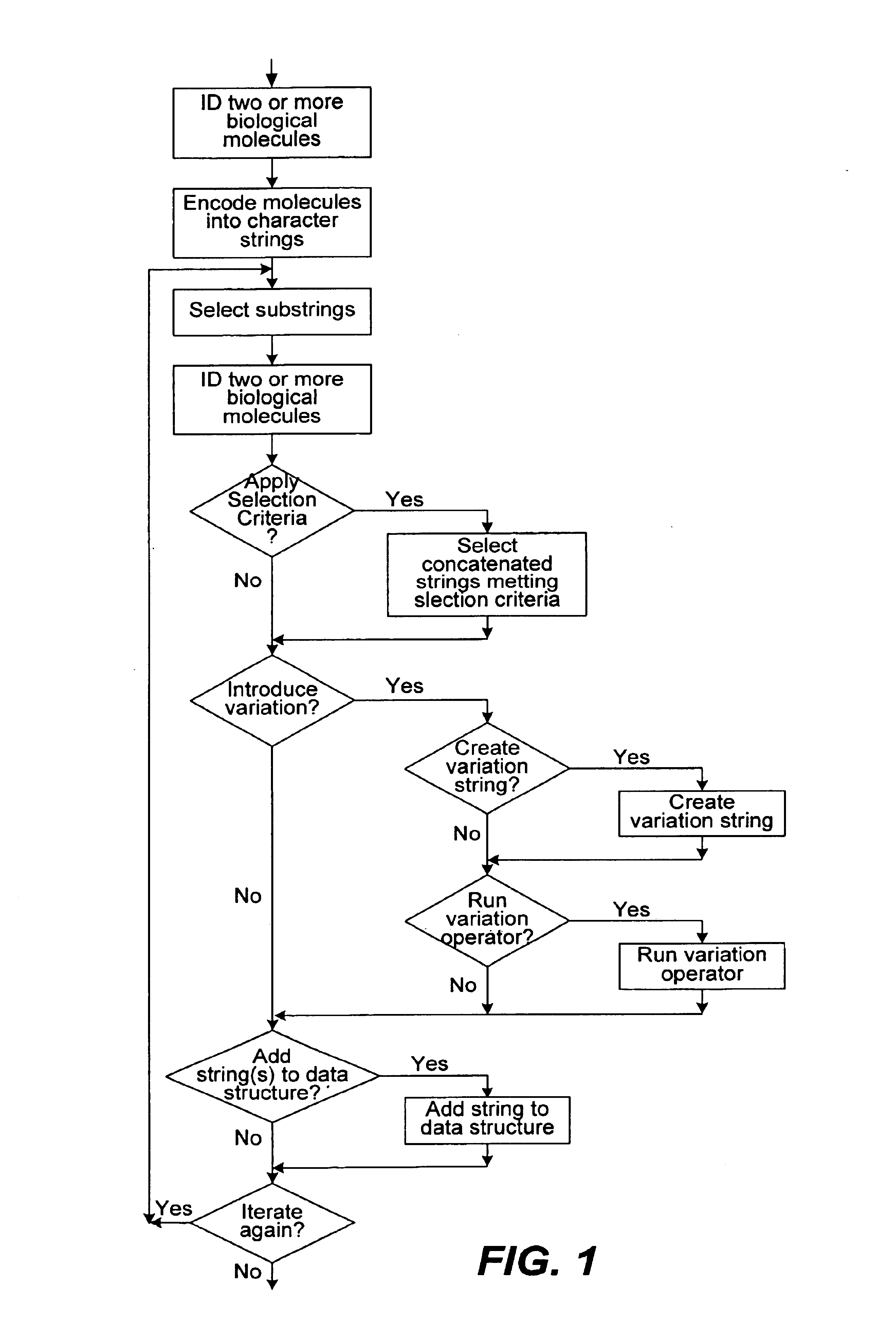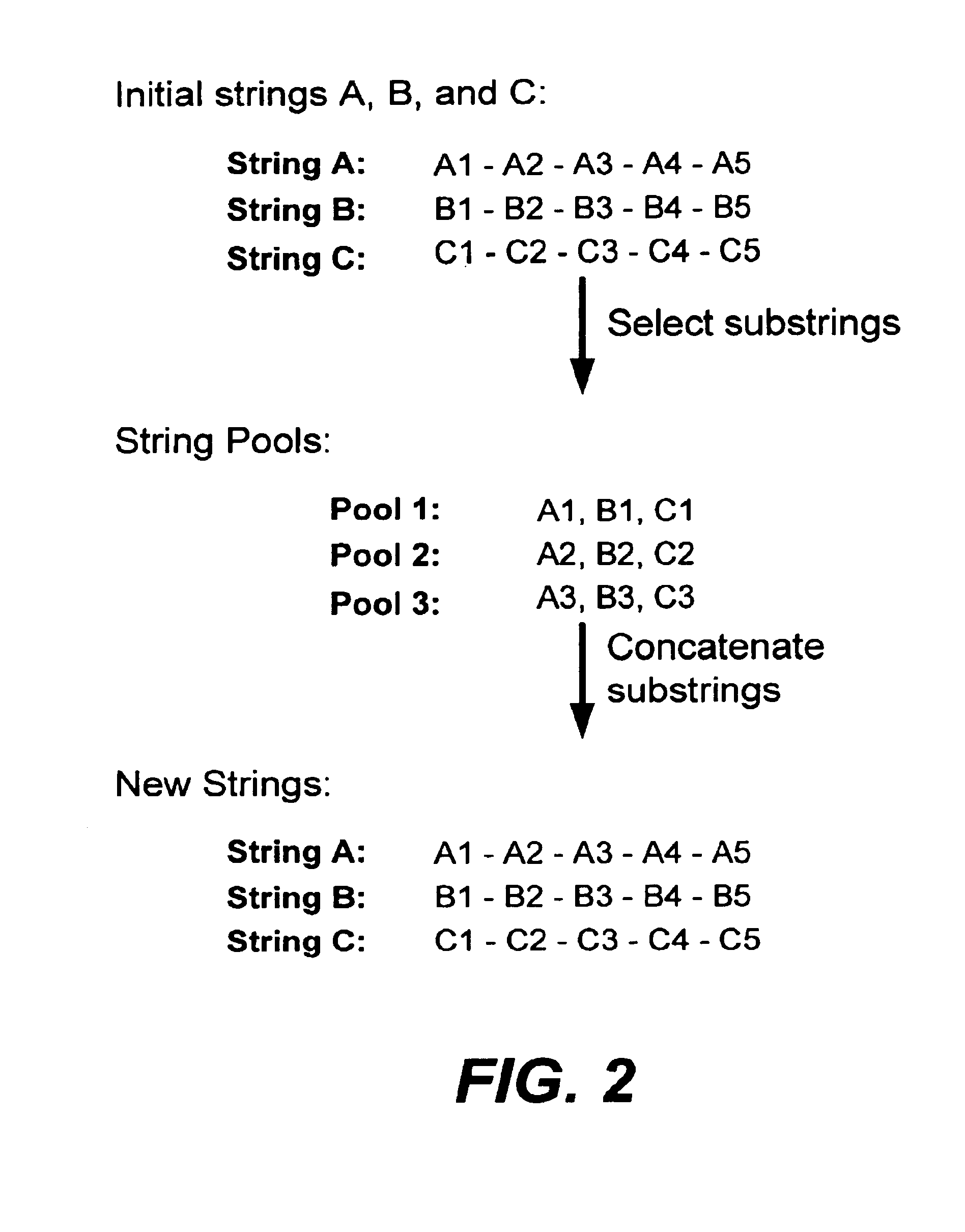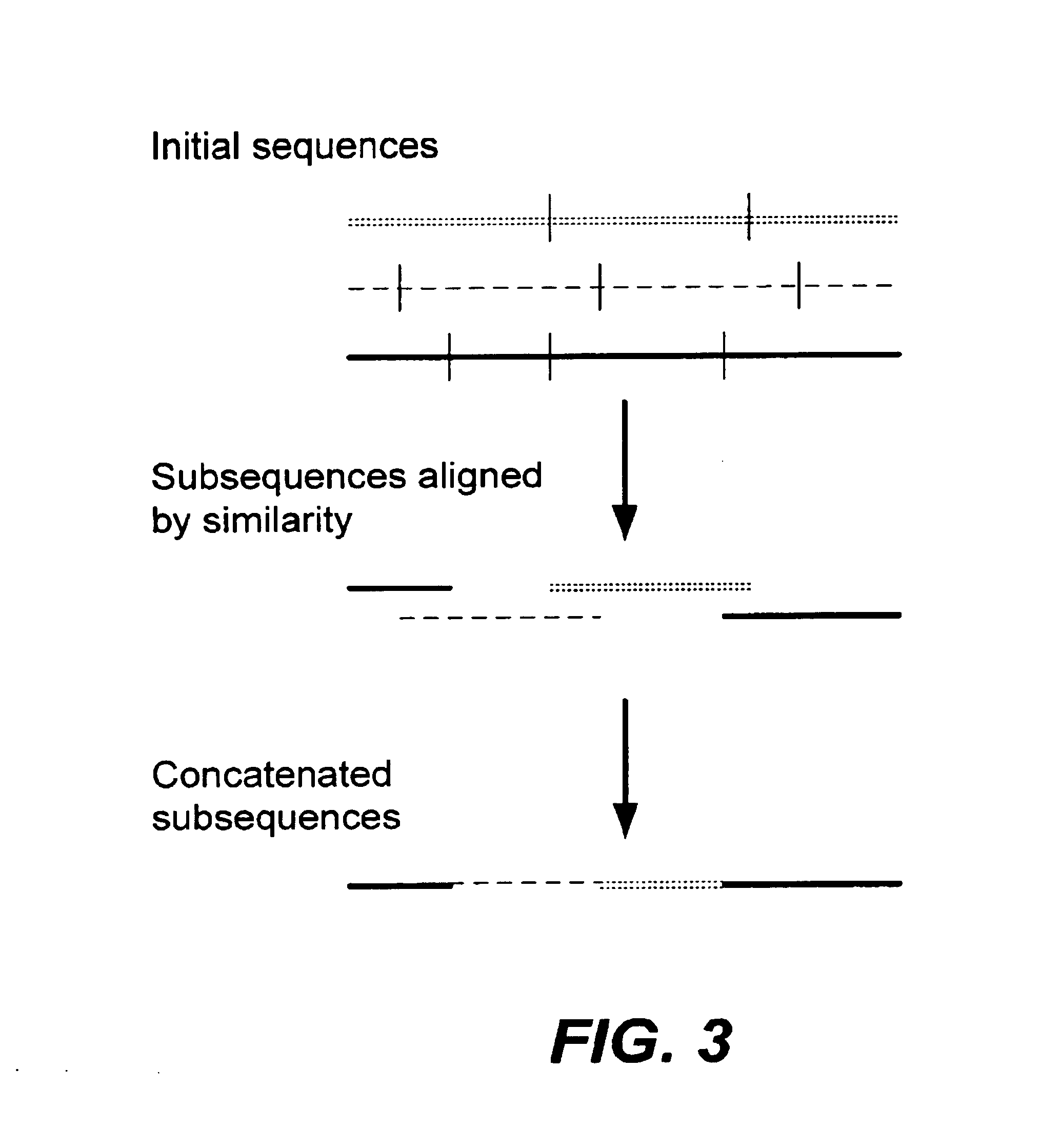Methods of populating data structures for use in evolutionary simulations
a data structure and evolutionary simulation technology, applied in the field of computer modeling and simulations, can solve problems such as insufficient complexity
- Summary
- Abstract
- Description
- Claims
- Application Information
AI Technical Summary
Benefits of technology
Problems solved by technology
Method used
Image
Examples
example 1
Subtilisin Family Model
[0217]Amino acid sequences were aligned. (Codon usage can be optimized on retrotranslation for a preferred expression system, and number of oligonucleotides for synthesis can be minimized). A Dot plot pairwise alignment of all possible pairs of 7 parents was made (FIG. 5, 6, 7). Pair 6 and 7 showed 95% percent identity per each window of ≧7aa, while all other pairs showed 80% percent identity per each window of ≧7aa. Note that stringency of alignment (and subsequent representation of crossover between parents) can be manipulated individually for each pair, so that low homology crossover can be represented at the expense of highly homologous parents. No structural biases or active site biases were incorporated in this model.
example 2
A Process for Design of Crossover Oligonucleotides for Synthesis of Chimerical Polynucleotides
[0218]First, substrings are identified and selected in parental (initial) strings for applying a crossover operator to from chimeric junctions. This is performed by: a) identifying all or part of the pairwise homology regions between all parental character strings, b) selecting all or part of the identified pairwise homology regions for indexing at least one crossover point within each of the selected pairwise homology regions, c) selecting one or more of the pairwise non-homology regions for indexing at least one crossover point within each of the selected pairwise nonhomology regions (“c” is an optional step which can be omitted, and is also a step where structure-activity based elitism can be applied), thereby providing a description of a set of positionally and parent-indexed regions / areas (substrings) of parental character strings suitable for further selection of crossover points.
[021...
PUM
| Property | Measurement | Unit |
|---|---|---|
| Fraction | aaaaa | aaaaa |
| Fraction | aaaaa | aaaaa |
| Fraction | aaaaa | aaaaa |
Abstract
Description
Claims
Application Information
 Login to View More
Login to View More - R&D
- Intellectual Property
- Life Sciences
- Materials
- Tech Scout
- Unparalleled Data Quality
- Higher Quality Content
- 60% Fewer Hallucinations
Browse by: Latest US Patents, China's latest patents, Technical Efficacy Thesaurus, Application Domain, Technology Topic, Popular Technical Reports.
© 2025 PatSnap. All rights reserved.Legal|Privacy policy|Modern Slavery Act Transparency Statement|Sitemap|About US| Contact US: help@patsnap.com



